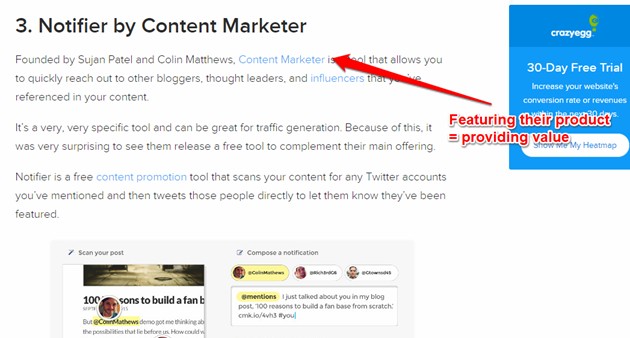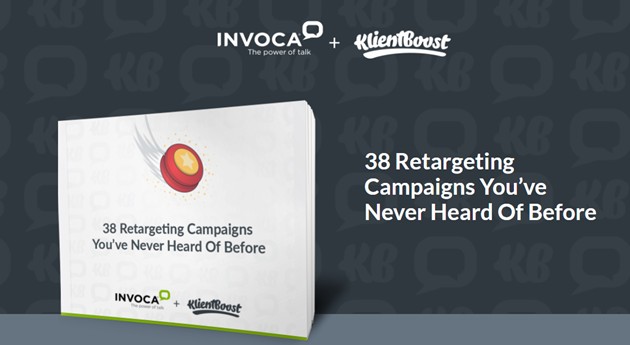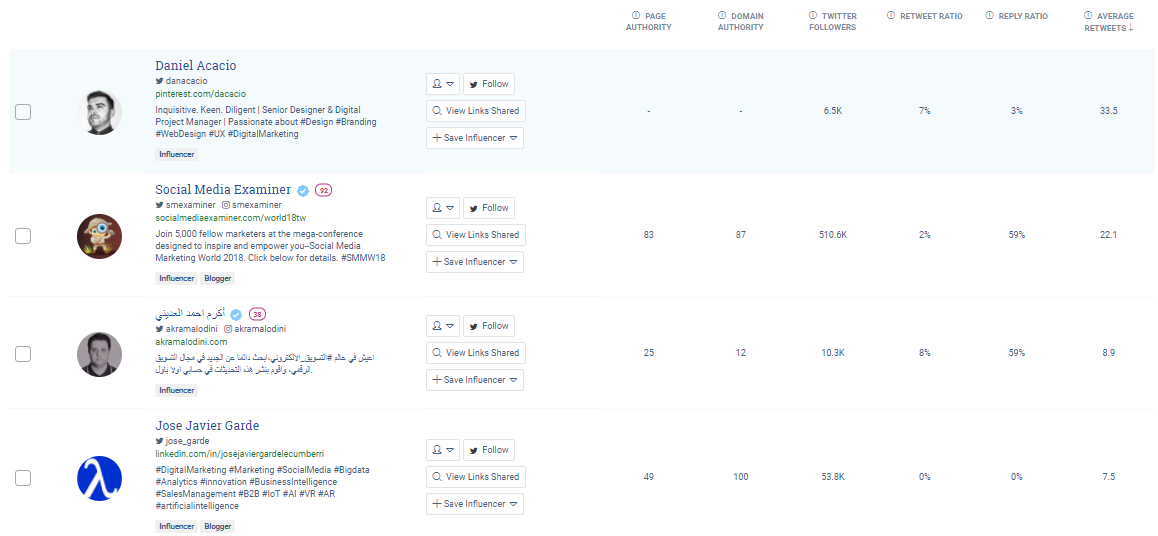This has been a tricky year for marketers. Between Facebook's continual adjusting of algorithms for how posts are viewed and GDPR's complicating email marketing, we're all looking for new ways to reach our audiences.
One of the most effective methods of reaching new audiences is getting in front of other people's audiences (OPAs).
And one of the best methods for getting in front of OPAs is influencer engagement. By building influencer relationships, B2B marketers can tap into a wider audience quickly.
Here are four ways to do that.
1. Find influencers, then get their attention
Sadly, most advice to organically engage influencers starts and ends with "provide value." And that value is measured only in the form of comments, tweets, and shares.
Although useful, those aren't the metrics that keep influencers up at night. However, they are useful for becoming a more recognized name with your target influencers.
Start by creating an engagement tracking spreadsheet. Include your influencers' contact details, links to social profiles, and key metrics, such as followers and website domain authority.
Need help identifying the right influencers? Here are two ways:
- Use BuzzSumo's data. Search for a relevant keyword, and then click on "View Sharers." Order the results by number of followers.
- Find partner brands. Don't focus only on bloggers and thought-leaders. Consider partnering with other companies that have noncompeting value propositions. Use LinkedIn to find relevant executives within other industries.
Now that you know where to find influencers, you must use engagement methods they can't ignore. Although vanity engagement (liking, sharing, and tweeting) are not the most creative ways of engaging influencers, they are important to becoming a known name.
Here are three ways to use vanity engagement:
- Comments. If the influencer regularly posts fresh content, add meaningful comments. Don't just say, "Nice post!" Ask questions, add your perspective, and provide new ways of approaching a challenge the influencer has addressed.
- Communities. Find the LinkedIn groups, Facebook groups, and online forums they frequent. Join the discussions they are part of. Comment to build a one-to-one connection.
- Social engagement. This direct method provides an additional way to get on your target influencers' radar. Again, get involved in discussions where they are active. Comment on their status updates, and share them with your own audience.
Once you've done all that, you can begin thinking about outreach. The trouble is, you need a compelling reason to connect with an influencer in the first place.
That comes back to value. Now that you know how to engage, here's how to provide value.
2. Get them in front of your audience
Getting influencers in front of an expanded audience is one of the best ways to show them your value.
It's likely they are also trying to get their brand, products, and message out to the world, and featuring them in your guest blogging efforts can help them achieve that goal.
Start by finding a topic that brings target influencers together. You can do that by making them the focus of your post.
For example, in a guest post that I created for CrazyEgg, 7 Side Projects That Became Marketing Engines, I reached out to marketers from the startups I featured.
The objective was to get their perspectives on those projects and the results they generated. The end product was an insightful piece of content for CrazyEgg that presented those marketers and their startups in front of a wider audience.

Another approach is to create a single piece of content that features a specific influencer. That is more effective if you can tell the story of how that influencer overcame a challenge that your product helps to solve.
Finally, follow your usual content creation process and look for ways to feature your target influencers. For example, if you were to write an article on content distribution, you could position your article toward SaaS companies.
Remember, the objective is to serve the influencer first. Once a relationship is established, you can go on find mutually beneficial ways to provide value to their audience using content.
3. Conduct influencer interviews for insights
To create great content, you need to collect insights.
That is where influencer interviews come in. They are the bridge between the initial engagement and the killer content you're going to create.
Those discussions contribute to great content and long-term partnerships, leading to strategic relationships, business development opportunities, and your name in front of a wider audience.
Your primary objective should be a telephone interview. "Digital interviews," including email, can work, but it's difficult to dig deep into the responses. Give influencers an option between the two, but scheduling a call should be your priority.
When interviewing influencers, keep these principles in mind:
- Truly listen. Absorb everything they have to say, and avoid getting into a "wait your turn to speak" mindset. Listen first.
- Keep it open-ended. Stick with 3-5 broad questions. Keeping the quantity of questions low allows you to dig into their responses. By "threading" the conversation in that way, you'll uncover the true motivations behind their actions. That is where the best insight for your content lives.
- Avoid leading, short-answer questions. These might include "How many leads did you generate with your side project?" Reframe those questions to get at insights: e.g., "What impact did this side project have on your business?"
- Build a connection. People do business with those they like. Making friends should be one of your key objectives. When you build rapport, influencers will be more likely to open up to you.
Digital interviews can still work if that is the influencer's preference. In fact, that is what I did for the CrazyEgg example I noted earlier. Two of the discussions were conducted over Twitter messaging! It's possible to dig deep, but it'll take a little longer.
Once you've gleaned insights from your target influencers, it's time to turn that information into content. Here's a framework you can follow to make sure that content is as valuable as possible:
- Practicality. Your content must be actionable. Readers should end the experience feeling empowered. By the time they reach the conclusion, they should have everything they need to act on what they've learned.
- Challenge. Outline the pain and complication in the introduction. What problem is your content aiming to solve?
- Storytelling. Don't just tell your readers what to do. Wrap the content in a story. Begin with the setup, go into the content and conflict, and then wrap up with a resolution. Influencer interviews should give you everything you need.
- Instruct. Provide step-by-step instructions. Include examples, screenshots, and third-party statistics. Lead your reader from A-to-B.
4. Create co-branded content
Guest blogging isn't just a vessel for influencer marketing. It can be a great way to connect with senior decision-makers for co-marketing, business development, and even ABM efforts.
Co-branded content means partnering with a noncompeting brand that has an audience similar to yours. You work together to create a valuable piece of content to promote to both audiences.
Doing so provides a win-win scenario because both brands enjoy a spike in subscribers and leads.
And it works wonders! Jonathan Dane, founder of PPC agency KlientBoost, decided to put traditionally "owned" content aside in favor of co-branded e-books. He thought that would have a bigger impact on getting exposure and creating opportunities for his new agency.

The result? The tactic helped KlientBoost grow to $1 million in revenue within the first year.
LinkedIn is a great place to look for potential partners. Search for relevant job titles in industries unrelated to yours. Reach out with a personalized message.
Again, it's important to get on their radar first. Go back to the engagement principles from earlier in this article. When you do reach out, make sure the benefits of the relationship are clear. And when you do have a business relationship going with the other brand, I recommend taking on most of the work. Here's a three-step framework for creating co-branded content campaigns:
- Create an outline. Start with a framework that outlines each section or "chapter" of your content. Include a description of what each section will cover and why it's important to the audience you share. At this stage, both parties will need to agree and sign off before moving on.
- Get writing. Like all effective content marketing, the writing should be in-depth, actionable, and full of examples. Include stories from influencers as well as case studies from both brands involved.
- Determine the design and landing page. Wrap your co-branded content in a beautiful design. Get a landing page built, and create marketing automation systems that allow both parties to receive their share of the leads generated.
- Distribute. Once your co-branded content goes live, it's time to distribute. Both parties should send emails to their lists and post on social media. Consider tapping into platforms such as Product Hunt, and use the power of sponsored social posts.
* * *
B2B influencer marketing isn't about persuading thought leaders to share your content. It's about building mutually beneficial, long-term relationships.
The first step is to add real value. Do that by helping influencers achieve their own goals. People love talking about themselves, and when it means getting their message to a wider audience, they'll love you for it.





